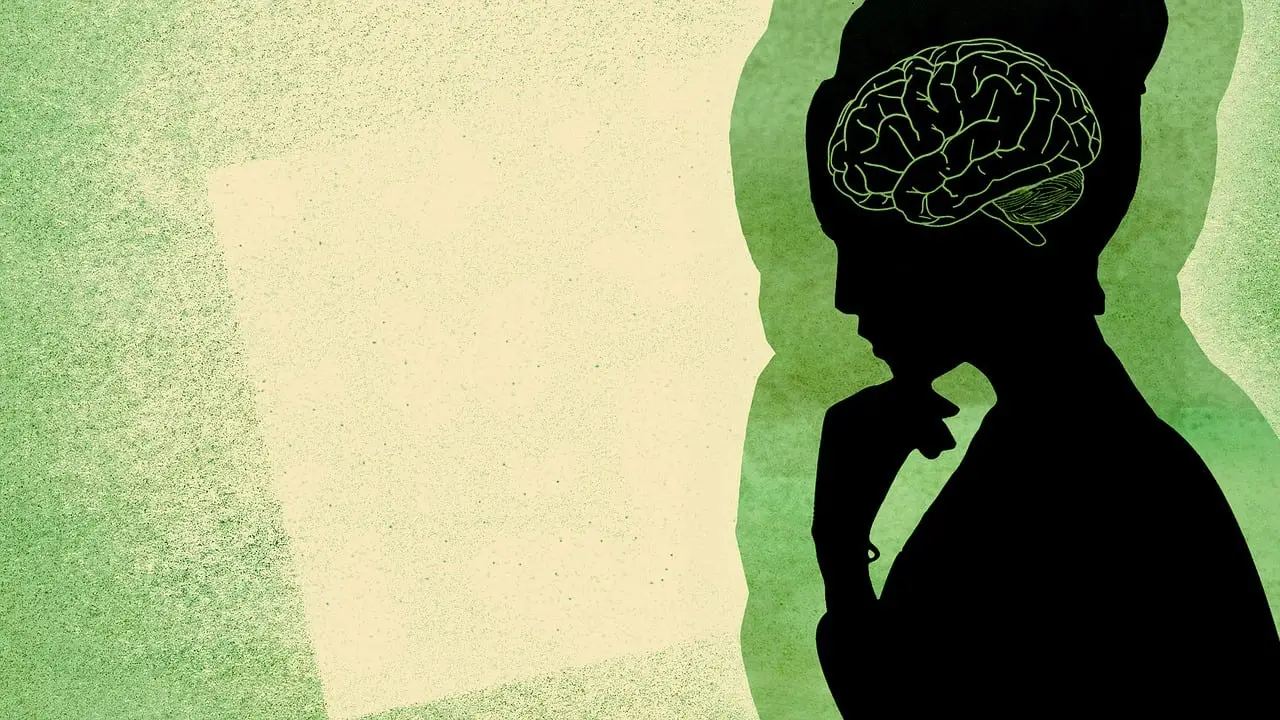Healing is rarely a straight path. There are moments when you feel strong, grounded, and fully in control, and others where the weight of the past comes rushing back, knocking the wind out of you. As a therapist, I’ve walked alongside many who have experienced trauma, and as someone who’s experienced my own losses and challenges, I know this journey can be a winding road.
The truth is, trauma isn’t just a memory; it’s something we carry in our bodies. Our nervous system holds onto the emotional and physical imprints of traumatic experiences. That’s why, even long after the trauma itself, certain situations can make us feel like we’re right back in that painful moment. I’ve worked with many clients who experienced trauma 20, 30, or even more years ago, and yet, they continue to feel its impact deeply in their bodies and nervous systems. This is the part of healing that can feel disheartening—just when you think you’ve moved on, something seemingly small can send you spiraling back into old fears, anxiety, or sadness. This is where understanding triggers becomes essential.
If we dig a little deeper into how trauma affects our bodies, Polyvagal Theory helps explain why our nervous system responds the way it does to triggers. Developed by Dr. Stephen Porges, this theory shows us that our autonomic nervous system has three key states: the ventral vagal state, which is where we feel safe, connected, and grounded; the sympathetic state, also known as the fight-or-flight response, when our bodies feel threatened and gets ready to defend or escape; and the dorsal vagal state, which is our shutdown mode, often triggered by a sense of hopelessness or feeling overwhelmed.
When trauma happens, it throws our nervous system out of balance. The body, wired for survival, stays stuck in a high-alert mode, constantly on the lookout for danger, even when there isn’t any real threat around. This automatic process is called neuroception—a concept developed by Dr. Stephen Porges in Polyvagal Theory. It’s the way our nervous system subconsciously scans our environment for signs of safety or danger without us even realizing it.
Let me give you an example to make this clearer. Imagine you’re walking through a park, feeling relaxed and enjoying the day. You’re in what we call the ventral vagal state, where you feel safe, connected, and grounded. But then, out of nowhere, you hear a loud noise that reminds you of a past traumatic event, like a car accident you were in years ago. In that split second, your nervous system jumps into action, and before you know it, you’re in fight-or-flight mode—your heart races, your muscles tense up, and you’re ready to either confront the situation or run from it.
Even though you’re safe in the park, your body and brain don’t know that. They’re reacting as if you’re back in that dangerous moment from the past. This is neuroception at work. If that fight-or-flight response doesn’t calm things down, your nervous system might go even further into a shutdown mode, where you feel numb or disconnected—almost like you’re shutting down emotionally to protect yourself from the overwhelm.
This is why healing from trauma isn’t just about “moving on” or “forgetting.” It’s about helping your body learn to feel safe again, which is why I work with approaches like Somatic Experiencing to help clients shift their nervous system back into a place of calm and safety and EMDR (Eye Movement Desensitization and Reprocessing) which helps the nervous system regulate itself by processing traumatic memories that keep the body in a hypervigilant state (sympathetic) or a shutdown state (dorsal vagal). These tools help us move out of those survival states and into a place where we can actually heal.

Understanding Triggers
Now that we’ve gained a better understanding of how trauma affects the body, it’s time to explore triggers—those subtle reminders of past trauma that can suddenly disrupt our sense of safety. Triggers are those unexpected reminders of past trauma that can pull us back into old feelings of pain—often without warning. They can be subtle—a certain smell, a sound, or even a fleeting sensation. What makes triggers so powerful is their ability to jolt us back to a moment we thought we had already moved past, instantly activating our body’s alarm system. This can leave us feeling anxious, overwhelmed, or even frozen.
Many people I’ve come across, especially those who have endured systemic trauma or childhood neglect, describe their triggers as sneaky and unpredictable. You could be going through your day just fine, when suddenly a wave of emotion or anxiety hits from out of nowhere. We’ve also found that triggers are unique to each person. What may seem insignificant to one individual can be deeply disturbing to another, depending on their personal history. Triggers don’t just evoke emotional responses; they can also manifest physically, showing up as an increased heart rate, muscle tension, or even nausea. This is how trauma works—it embeds itself in places we’re not always aware of. The key isn’t in trying to avoid triggers altogether but in recognizing them and learning how to manage the feelings they bring up, so we can regain control and keep moving forward.
Flashbacks: When the Past Feels Present
While triggers can bring up intense emotional and physical responses in the moment, flashbacks take this a step further by making us feel as though we’re reliving the trauma itself, as if it’s happening all over again. Flashbacks are like time machines—moments when your brain gets caught in a loop of the past. But unlike a typical memory, when a flashback occurs, it’s not just about remembering what happened; it’s as though your mind and body are transported back to that traumatic moment. You’re not just thinking about the event—you’re reliving it, feeling everything you felt then, from the fear to the helplessness.
A flashback can feel as though you’re watching a movie of your life, but instead of being a passive viewer, you’re suddenly pulled onto the screen, acting out the most distressing scene. It’s visceral and immersive. You might hear the same sounds, see the same images, and experience the same physical sensations. Your heart may race, your body might tense up, and you could feel trapped in that moment, disconnected from the present reality.
This is the nature of flashbacks—they hijack your sense of time and space, throwing you out of the present and plunging you back into survival mode. Your nervous system, particularly the parts influenced by trauma, responds as if the danger is happening all over again. Even though there’s no actual threat in the moment, your body and brain react as though you’re still in danger, reinforcing the trauma response and making it feel impossible to escape. Understanding flashbacks is critical for healing because they are often involuntary and can be triggered by subtle cues that might not seem obvious. Recognizing the signs and knowing how to ground yourself can help you regain a sense of control when a flashback occurs.

Navigating through Triggers and Flashbacks
So, how do we navigate through these difficult experiences? How do we continue the healing journey when it feels like the trauma keeps dragging us back? Here are a few things I’ve found incredibly useful both personally and with my clients:
1. Awareness is Your Superpower: Recognizing your triggers is the first step to gaining power over them. This is where mindfulness and body-awareness work come in. Through mind and body approaches, we can begin to notice the signs that something is off. When you feel that familiar sense of unease, ask yourself, “What is happening in my body right now?” When you can name what you’re feeling or noticing in your body, it puts you back in the driver’s seat. Instead of being overwhelmed by the trigger, you’re acknowledging it and taking an active role in managing your response.
2. Grounding Yourself in the Present: Grounding is crucial when you’re caught in a flashback or intense trigger. My go-to methods often involve the senses. One of my favorites is the 5-4-3-2-1 technique, where you use your senses to bring yourself back to the here and now:
-
-
Name 5 things you can see.
-
-
-
Name 4 things you can feel.
-
-
-
Name 3 things you can hear.
-
-
-
Name 2 things you can smell.
-
-
-
Name 1 thing you can taste.
-
Simple, but incredibly powerful. This tool brings you out of the overwhelming emotions of the past and anchors you in the safety of the present moment.
3. Breathe to Calm: Trauma often leaves us feeling stuck, both mentally and physically. Rather than pushing for energy release, I encourage a more gentle approach, like focusing on your breath. A simple breathing strategy called 4-7-8 breathing can help calm the nervous system and bring you back to the present moment.
Here’s how it works:
-
-
Inhale through your nose for a count of 4.
-
-
-
Hold your breath for a count of 7.
-
-
-
Exhale slowly through your mouth for a count of 8, letting all the air out.
-
This exercise helps regulate your body’s stress response and allows you to reconnect with a sense of calm. You don’t need to force anything; just let the breath guide you.
4. Grounding through Gentle Movement: In the healing process, trauma can often leave us feeling disconnected from our bodies, whether it’s through tension, anxiety, or physical discomfort. A powerful way to reconnect and calm the nervous system is through gentle, mindful movement. These movements are not about forcing change or pushing the body; rather, they offer a way to ground yourself in the present moment and ease tension without overstimulation. Here are a couple of exercises you may try to ground yourself;
Stretching – Simple stretches that focus on areas of the body where tension commonly accumulates, like the neck, shoulders, and back, can offer immediate relief. These movements help release tightness, allowing for relaxation and a deeper sense of awareness in the body.
– How to do it: Slowly raise your arms overhead as you inhale, stretching upward. As you exhale, gently lower your arms back down to your sides. This mindful movement brings attention to your body’s sensations while encouraging calmness and presence.
Mindful WalkingWalking, when done mindfully, can be a rhythmic and grounding way to reconnect with the present moment. By pairing breath with each step, it becomes a moving meditation, allowing the body and mind to align and relax.
– How to do it: Take slow, deliberate steps, noticing how your feet feel as they make contact with the ground. For added mindfulness, inhale for two steps, then exhale for the next two steps. This encourages rhythmic breathing, creating a calming connection between your body and the environment around you.

5. Self-Compassion During Your Healing Process: This one is personal for me. I often tell others, and I remind myself, that healing is not linear. There will be days when it feels like the trauma is still too close, when you may feel like you’re taking steps backward, or that you haven’t made any progress at all. But here’s the truth: each time you acknowledge a trigger, face an overwhelming emotion, or sit with a flashback without letting it consume you, you are healing. You’re breaking the pattern, even if it doesn’t always feel that way. You’re reclaiming your life, one moment at a time. Self-compassion is the backbone of this journey—it’s what sustains us through the ups and downs. Self-compassion isn’t just about being kind to yourself when things are easy; it’s about showing yourself grace when things are at their toughest. It means giving yourself permission to rest, to ask for help, and to accept that you’re doing the best you can with what you have. It’s easy to be hard on yourself, especially when trauma feels like it’s taking longer to heal than you expected, but real growth happens in those moments when you can soften and extend understanding to yourself.
A common belief is that once we’ve “healed,” we won’t feel the pain of our past anymore. But healing doesn’t erase the past—it changes the way we relate to it. It allows us to face those painful memories with more strength and resilience. You’re allowed to have setbacks, and you’re allowed to take your time. Healing doesn’t have an endpoint, and that’s okay. What matters most is that you’re moving forward, even if it’s just by showing yourself compassion when things feel hard.
6. The Healing Power of Animals and Nature: Connecting with animals or spending time outdoors can have a deeply calming effect on the nervous system, especially for those healing from trauma. Pets offer a special kind of non-judgmental companionship that helps regulate emotions and foster a sense of safety. When interacting with animals, whether through pet therapy or simply spending time with a beloved pet, the bond creates an opportunity for emotional grounding. Pets are attuned to our moods and behaviors, providing comfort and unconditional support without the complexities of human relationships. Just the act of petting a dog or a cat can lower stress hormones and increase levels of oxytocin, the “bonding” hormone, which promotes feelings of trust and comfort.
Nature, too, offers a profound space to reset. There’s something healing about being outside, breathing fresh air, and feeling the earth beneath your feet. Whether it’s sitting in a park, walking along a beach, or hiking a trail, being surrounded by nature can help soothe the mind and body. Studies have shown that time spent in nature reduces stress, lowers blood pressure, and decreases symptoms of anxiety and depression. This is often referred to as “nature therapy” or eco-therapy, and it helps the body return to a more balanced, regulated state by encouraging mindfulness, relaxation, and presence.
Both animals and nature provide a form of connection that is simple, grounding, and free from judgment. When healing from trauma, feeling overwhelmed or out of control is common, but engaging with animals or immersing yourself in nature can serve as an anchor—a way to re-center and find moments of peace.
7. Visualization Techniques for Calming the Mind: Visualization is a powerful and accessible tool for calming the mind and soothing the nervous system. By using your imagination to create a mental “safe space,” you can tap into your body’s natural ability to relax and shift out of heightened states of stress or anxiety. For those healing from trauma, visualization can be particularly helpful in moments of overwhelm, or when faced with difficult triggers, by allowing you to mentally retreat to a place of safety and security.
A common and highly effective visualization technique is the “safe place” visualization. In this practice, individuals imagine a location—real or fictional—where they feel completely safe, protected, and calm. This space might be a peaceful beach, a quiet forest, or even a cozy room. It’s important to choose a safe place that is completely free from any associations with past or present stress. The key to visualizing your safe place is to engage as many senses as possible to make the visualization more vivid: What does the air feel like? What sounds do you hear? What do you see around you? What do you smell? By immersing yourself in this imagined environment, your brain begins to shift focus away from stress and activates the parasympathetic nervous system, which is responsible for relaxation and rest.
Visualization isn’t just about creating a safe space; it can also involve guided imagery techniques, which are widely available through apps like Calm, Insight Timer, and Headspace. These apps offer a wide range of guided imagery sessions, often combined with mindfulness to help ease anxiety, manage stress, and support emotional regulation. Whether you’re imagining tension leaving your body or picturing yourself in a calming environment, the apps walk you through the process step-by-step, so you can follow along at your own pace. They’re great tools when you’re looking for a structured way to calm both your mind and body.
8. The Importance of Support: I cannot stress enough how vital it is to have support while you’re navigating your healing journey. Whether it’s a trusted friend, a family member, or a therapist, reaching out for help is not a sign of weakness—it’s an act of strength. Healing can be a lonely road at times, but we don’t have to walk it alone. Sometimes, we need someone to remind us of the tools we’ve already learned, or simply be there to listen as we sort through the storm of emotions.
I’ve seen so many people feel like they need to go through trauma or emotional pain by themselves, thinking that asking for help means they’re failing. But the truth is, healing is hard work. No one is meant to do it in isolation. Having someone to lean on doesn’t just help us stay grounded—it also provides the emotional safety we need to explore those parts of ourselves that we’ve hidden away for so long.
In my own life, I’ve found that the times when I was willing to ask for support were the times when I made the most progress. Support allows you to process your emotions, gives you space to reflect, and helps you recognize when you need to rest or take a break. Whether it’s someone helping you identify your patterns or just being a steady presence through the tough days, the right support system reminds you that you don’t have to carry everything by yourself.
So, if you’re struggling, reach out. Sometimes the bravest thing you can do is let someone in. Healing is a journey best traveled with a hand to hold, and it’s okay to ask for that.
Bringing It All Together: A Compassionate Healing Journey
Healing from trauma is a deeply personal journey, and there’s no one-size-fits-all solution. Whether it’s learning to recognize and manage triggers, navigating flashbacks, or practicing self-compassion on the toughest days, every step forward is progress. Grounding yourself through breathwork, gentle movement, time spent in nature, or visualization techniques can offer a sense of calm when the past feels overwhelming. Remember, you don’t have to go through this process alone—reaching out for support from a trusted friend, family member, or therapist is one of the most powerful ways to nurture your healing.
Each of these tools and strategies is meant to empower you on your path toward reclaiming peace. Healing isn’t about erasing the past; it’s about changing your relationship to it and building resilience along the way. Give yourself permission to take things one day at a time, to rest when needed, and to embrace the small victories. You are deserving of support, care, and, most importantly, compassion for yourself as you navigate this journey.
"Trauma creates change you don’t choose. Healing is about creating change you do choose." - Michelle Rosenthal
If you’re ready to reclaim your life and find strength in your resilience, I invite you to take the first step.
Contact me today to schedule a consultation, and let’s begin your journey toward healing together. To learn more about therapy intensives click here. To learn more about other services I offer, you can click here.

References:
- Van der Kolk, B. (2014). The Body Keeps the Score: Brain, Mind, and Body in the Healing of Trauma. Penguin Books.
- Neff, K. D. (2011). Self-Compassion: The Proven Power of Being Kind to Yourself. HarperCollins.
- Kabat-Zinn, J. (2013). Full Catastrophe Living: Using the Wisdom of Your Body and Mind to Face Stress, Pain, and Illness. Bantam Books.
- Nestor, J. (2020). Breath: The New Science of a Lost Art. Riverhead Books.
- Frumkin, H. (2001). Beyond toxicity: Human health and the natural environment. American Journal of Preventive Medicine, 20(3), 234-240.
- Rossman, M. L. (2010). Guided Imagery for Self-Healing: An Essential Resource for Anyone Seeking Wellness. New World Library.



